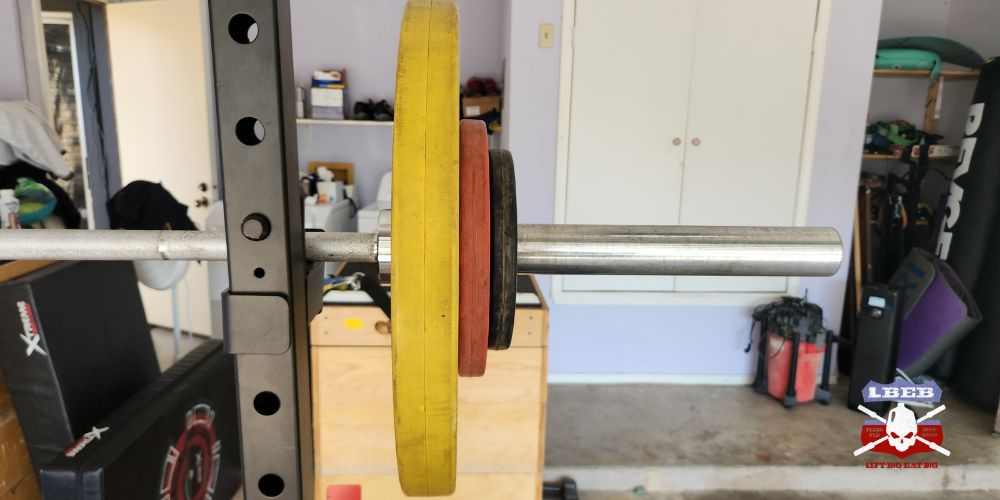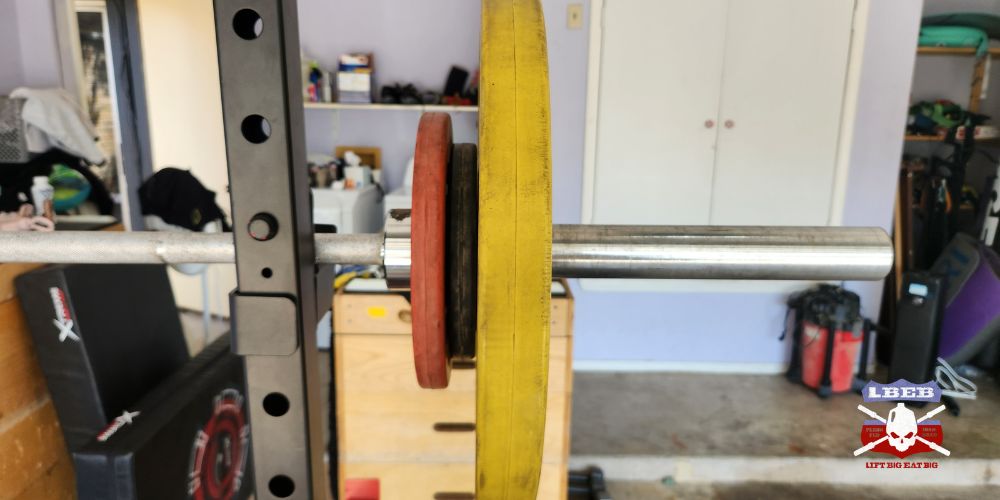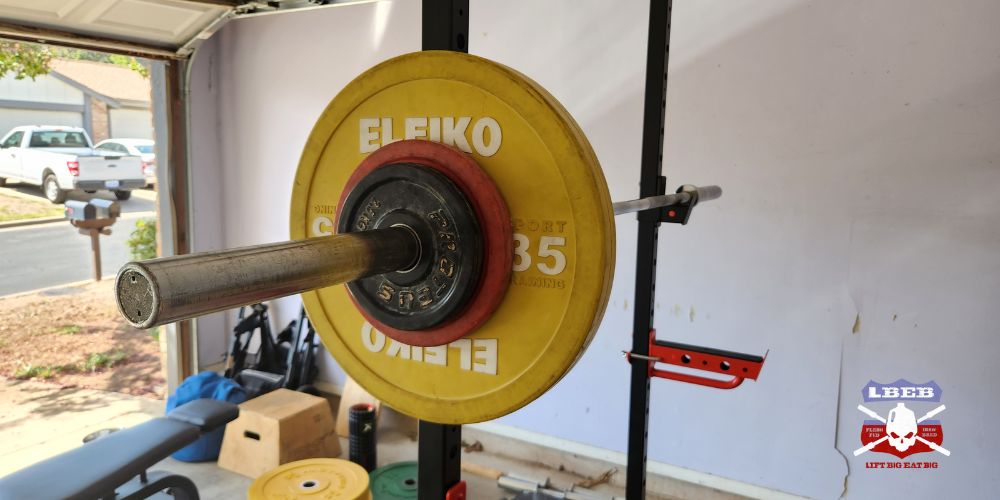Bumper plates are known for their rubber construction and are primarily used for Weightlifting. On the other hand, regular plates, typically made of iron, are commonly found in most gyms. Is it safe to mix bumper plates with regular plates when lifting?
You can mix bumper plates with regular plates, but it depends on the weight of the regular plates and if you intend on dropping them.
But there’s more to consider when mixing bumper plates and regular plates, and there’s a right and wrong way of doing it.
Table of Contents
Benefits of Mixing Bumper Plates with Regular Plates
When it comes to mixing bumper plates with regular plates, there are a few potential benefits to consider.
Gradual Weight Progression
Mixing bumper plates with regular plates allows for incremental weight adjustments. This is particularly beneficial for beginners or individuals who want to gradually increase their lifting capacity without jumping too quickly.
The lowest weight of a bumper plate is 10 lbs (5 kg). If you don’t want to take a 20 lb jump, you’ll need to use small regular plates known as change plates. This is how you mix bumper plates and regular plates properly.
Floor Protection
Bumper plates are designed to absorb impact and minimize damage to the floor and barbell. Using bumper plates with change plates reduces damage to your gym floor. This can also help when using a lone 45 lb bumper plate with 45 lb iron plates on the outside when deadlifting.
This is only recommended with a barbell you are okay with potentially being ruined as the steel plates are slightly smaller in diameter, so the sleeves support the weight of the extra plates.
Drawbacks of Mixing Bumper Plates with Regular Plates
While there are some potential benefits, consider the drawbacks of mixing bumper plates with regular plates:
Diameter Differences
Bumper plates typically have a larger diameter than regular plates. A 45 lb (20 kg) bumper plate is 450 mm, while an Olympic plate is 445 mm. While 5 mm doesn’t sound like much, the steel plates don’t touch the floor when bumper plates are on the bar.
Damage to Plates
When bumper and regular plates are used together, the plates are likely to be damaged. Bumper plates are intended for controlled drops and are designed to withstand impact. On the other hand, regular plates may be less durable and can get damaged under the stress of repeated drops.
Practical Tips for Mixing Bumper Plates with Regular Plates
If you still want to mix bumper plates with regular plates despite the drawbacks, here are some practical tips to ensure a safe and effective workout:
Don’t Drop Them Unless You Use Change Plates
Dropping a bar with 45 lb bumper plates on the inside followed by 45, 35, or 25 lb iron plates outside will damage your bumper plates and barbell. With repeated dropping, your bar will likely stop spinning, and the center ring will fall off if it is not plated.
Proper Weight Distribution
When loading the barbell, ensure the heavier bumper plates are placed closest to the collars. This helps maintain balance and reduces the risk of unnecessary stress on the barbell. It should look like this:

Not this:

Use Collars
Always use collars to secure the weights in place. This prevents any shifting or sliding of the plates during exercises, ensuring a stable and safe lifting experience. It’ll stop your change plates from moving too.
Inspect Plates Regularly
Regularly inspect both bumper plates and regular plates for signs of damage or wear and tear. Replace any plates showing cracks, chips, or other forms of impairment to ensure safety during workouts.
Use Platform or Mat
Use a weightlifting platform or a thick mat to absorb the impact of dropping your barbell. This will protect your bar, plates, and floor. You don’t want to drop bumper plates on a concrete floor, not just because of your equipment.
But you void your warranty on all your equipment, so nothing can be replaced when it becomes damaged.
Can Mixing Bumper Plates With Regular Plates Damage The Barbell?

Mixing bumper and regular plates can damage the barbell when done incorrectly. The correct way to do it is to only mix regular steel change plates up to 10 lbs (5 kg) with bumper plates to allow incremental loading.
The incorrect way is to load 25 lb+ regular plates outside of bumper plates putting too much stress on the bumper plates and bar, especially when dropping from overhead.
The other mistake is to load regular plates inside bumper plates, further stressing the bumper plates.
Can Mixing Bumper Plates With Regular Plates Damage The Floor?
Bumper plates are designed to absorb impact and minimize floor damage during drops. However, when combined with regular plates, the risk of damaging the floor increases.
Regular plates may not have the same impact-absorbing properties, and repeated drops can cause cracks or damage the floor surface. Using a weightlifting platform or a mat can help mitigate this risk.
Summary
While it is possible to mix bumper plates with regular plates for gradual weight progression, it has to be done properly to avoid damaging your equipment and floor. The golden rule is not to mix regular plates greater than 10 lbs.
